Partial Discharge Inception Modelling of Insulating Materials and Systems: Contribution of Electrodes to Electric Field Profile Calculation
Abstract
:1. Introduction
2. Background: Partial Discharge Inception Field Modeling and “Three-Leg” Approach
- electric field (and thermal stress) simulation,
- extrinsic aging threshold modeling (PD inception field and voltage in combination with leg 1),
- PD measurements for validation of the first two legs.
2.1. A Model for PD Inception
2.2. Electrode Design and Field Calculation
3. Impact of the Electrode Shape on the Electric Field Computation and PD Inception Field Estimation
3.1. Influence of Electrode Curvature Radius
3.2. Influence of Electrode-Specimen Contact Area
4. Experimental Validation
4.1. Test Set-Up
4.2. PDIV Measurements and Discussion
5. Conclusions
Author Contributions
Funding
Institutional Review Board Statement
Informed Consent Statement
Data Availability Statement
Conflicts of Interest
References
- Stone, G.C. Partial discharge diagnostics and electrical equipment insulation condition assessment. IEEE Trans. Dielectr. Electr. Insul. 2005, 12, 891–903. [Google Scholar] [CrossRef]
- Hudon, C.; Belec, M. Partial discharge signal interpretation for generator diagnostics. IEEE Trans. Dielectr. Electr. Insul. 2005, 12, 297–319. [Google Scholar] [CrossRef]
- Kreuger, F.H. Partial Discharge Detection in High-Voltage Equipment; Butterworth-Heinemann: Oxford, UK, 1990. [Google Scholar]
- IEC 60505; Evaluation and Qualification of Electrical Insulation Systems. 4th ed. International Electrotechnical Commission: Geneva, Switzerland, 2011.
- IEC 60034-18-41; Partial Discharge Free Electrical Insulation Systems (Type I) Used in Rotating Electrical Machines Fed from Voltage Converters—Qualification and Quality Control Tests. International Electrotechnical Commission: Geneva, Switzerland, 2018.
- IEC 60034-27-5; Off-Line Measurement of Partial Discharge Inception Voltage on Winding Insulation under Repetitive Impulse Voltage. International Electrotechnical Commission: Geneva, Switzerland, 2017.
- Nya, B.H.; Brombach, J.; Schulz, D. Benefits of Higher Voltage Levels in Aircraft Electrical Power Systems. In Proceedings of the 2012 Electrical Systems for Aircraft, Railway and Ship Propulsion, Bologna, Italy, 16–18 October 2012. [Google Scholar]
- Zhang, X.; Haran, K.S. High-specific-power electric machines for electrified transportation applications-technology options. In Proceedings of the IEEE Energy Conversion Congress and Exposition (ECCE), Milwaukee, WI, USA, 18–22 September 2016. [Google Scholar]
- Catalán, P.; Wang, Y.; Arza, J.; Chen, Z. A Comprehensive Overview of Power Converter Applied in High-Power Wind Turbine: Key Challenges and Potential Solutions. IEEE Trans. Power Electr. 2023, 38, 6169–6195. [Google Scholar] [CrossRef]
- Montanari, G.C.; Nath, D.; Cambareri, P. A new approach to the design of surface subsystems of polymeric insulators for HV and MV apparatus under AC voltage. High Volt. 2023, 8, 651–658. [Google Scholar] [CrossRef]
- Lizcano, M.; Williams, T.S.; Shin, E.E.; Santiago, D.; Nguyen, D. Aerospace Environmental Challenges for Electrical Insulation and Recent Developments for Electrified Aircraft. Materials 2022, 15, 8121. [Google Scholar] [CrossRef]
- IEC 61251; Electrical Insulating Materials—A.C. Voltage Endurance Evaluation. International Electrotechnical Commission: Geneva, Switzerland, 2014.
- IEC 60216; Parts 1–7, Guide for the Determination of Thermal Endurance Properties of Electrical Insulating Materials. International Electrotechnical Commission: Geneva, Switzerland, 2013.
- IEC 62539; Guide for the Statistical Analysis of Electrical Insulation Breakdown Data. International Electrotechnical Commission: Geneva, Switzerland, 2007.
- Niemeyer, L. A generalized approach to partial discharge modeling. IEEE Trans. Dielectr. Electr. Insul. 1995, 2, 510–528. [Google Scholar] [CrossRef]
- Cambareri, P.; Montanari, G.C. Derivation of a Surface Discharge Model for the Design of the Surface Components of Insulation Systems used in Industrial Electronics Environments. IEEE Journ. Emerg. Select. Topics Ind. Electron. 2022, 4, 698–706. [Google Scholar] [CrossRef]
- Montanari, G.C.; Schwartz, S.; Yang, Q.; Nath, D.; Ghosh, R.; Cuzner, R. Towards Partial Discharge Automatic and Unsupervised Monitoring: A Technological Breakthrough for MV Electrical Asset Condition Monitoring and Diagnostics. In Proceedings of the 2022 9th International Conference on Condition Monitoring and Diagnosis (CMD), Kitakiushu, Japan, 13–18 November 2022. [Google Scholar]
- Contin, A.; Cavallini, A.; Montanari, G.C.; Pasini, G.; Puletti, F. Digital detection and fuzzy classification of partial discharge signals. IEEE Trans. Dielectr. Electr. Insul. 2022, 9, 335–348. [Google Scholar] [CrossRef]
- Ghosh, R.; Seri, P.; Montanari, G.C. Partial discharges in DC electrical insulation during voltage transients and steady state: Noise rejection, discharge source identification and life estimation. Electric Power Syst. Res. 2021, 194, 107117. [Google Scholar] [CrossRef]
- IEC 60270; High-Voltage Test Techniques—Partial Discharge Measurements. 3.1 ed. International Electrotechnical Commission: Geneva, Switzerland, 2015.
- BIPM; IEC; IFCC; ILAC; ISO; IUPAC; IUPAP; OIML. Guide to the Expression of Uncertainty in Measurement; GUM 1995 with Minor Corrections; Joint Committee for Guides in Metrology, JCGM 100:2008; Morgan & Claypool Publishers: San Rafael, CA, USA, 2011. [Google Scholar]

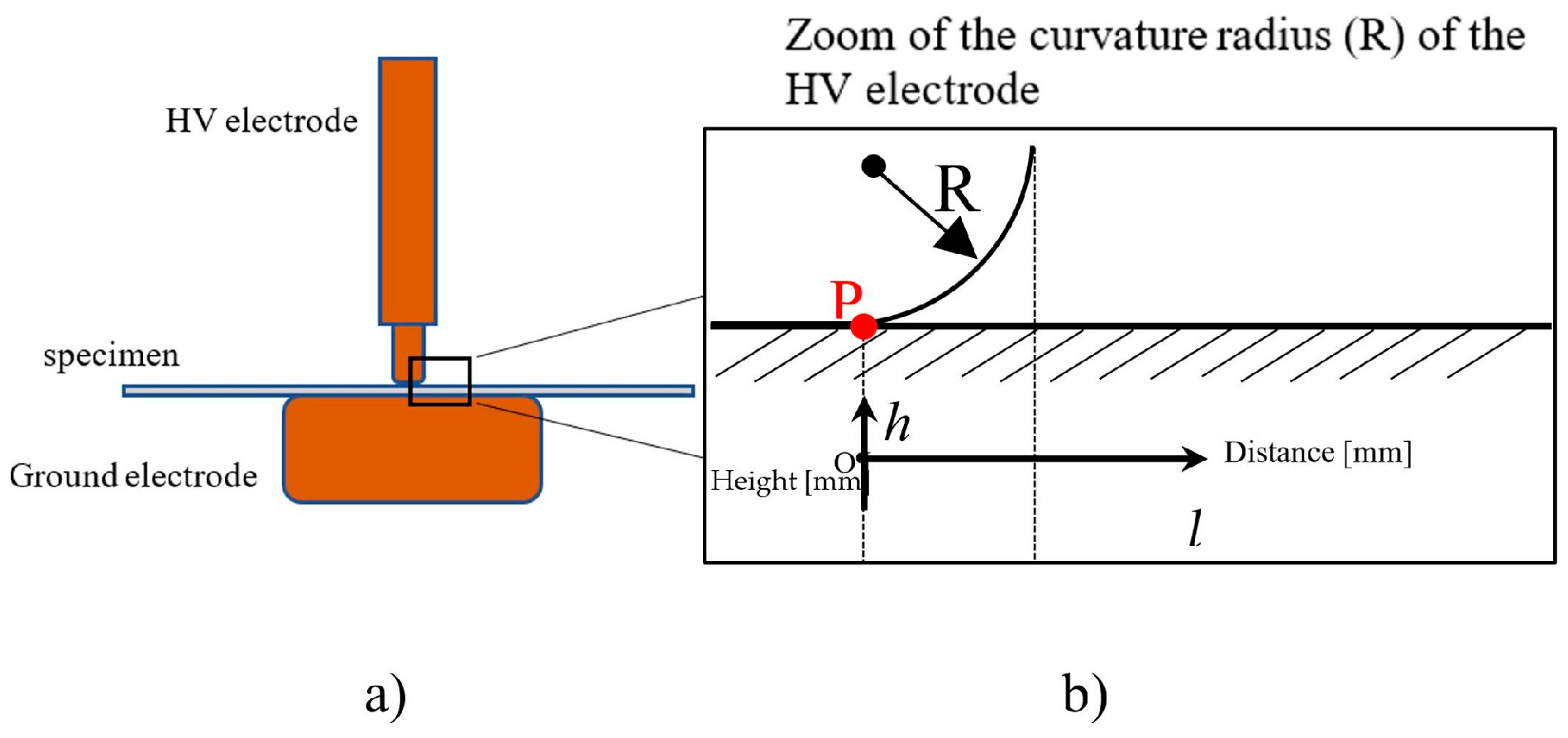

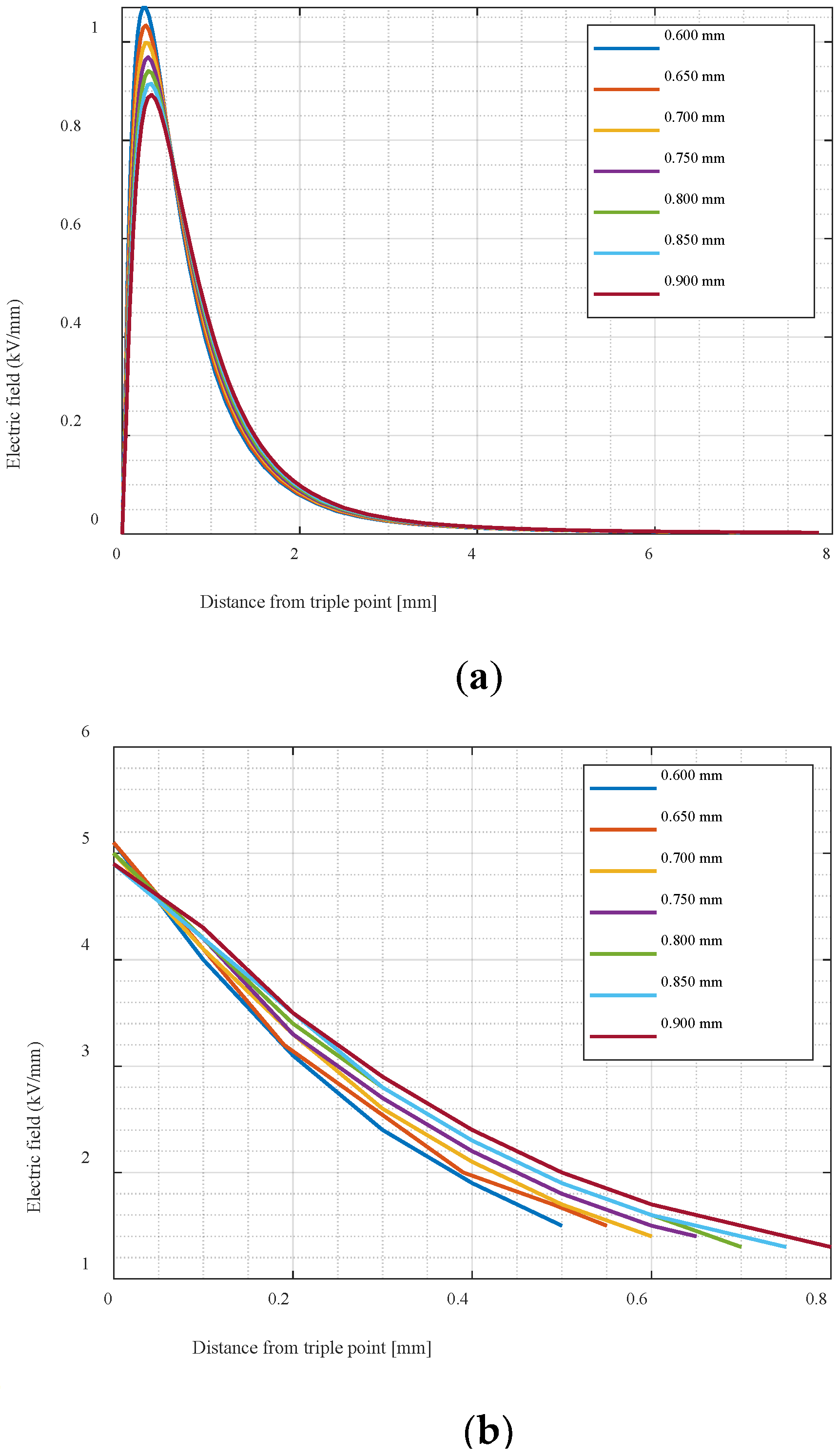
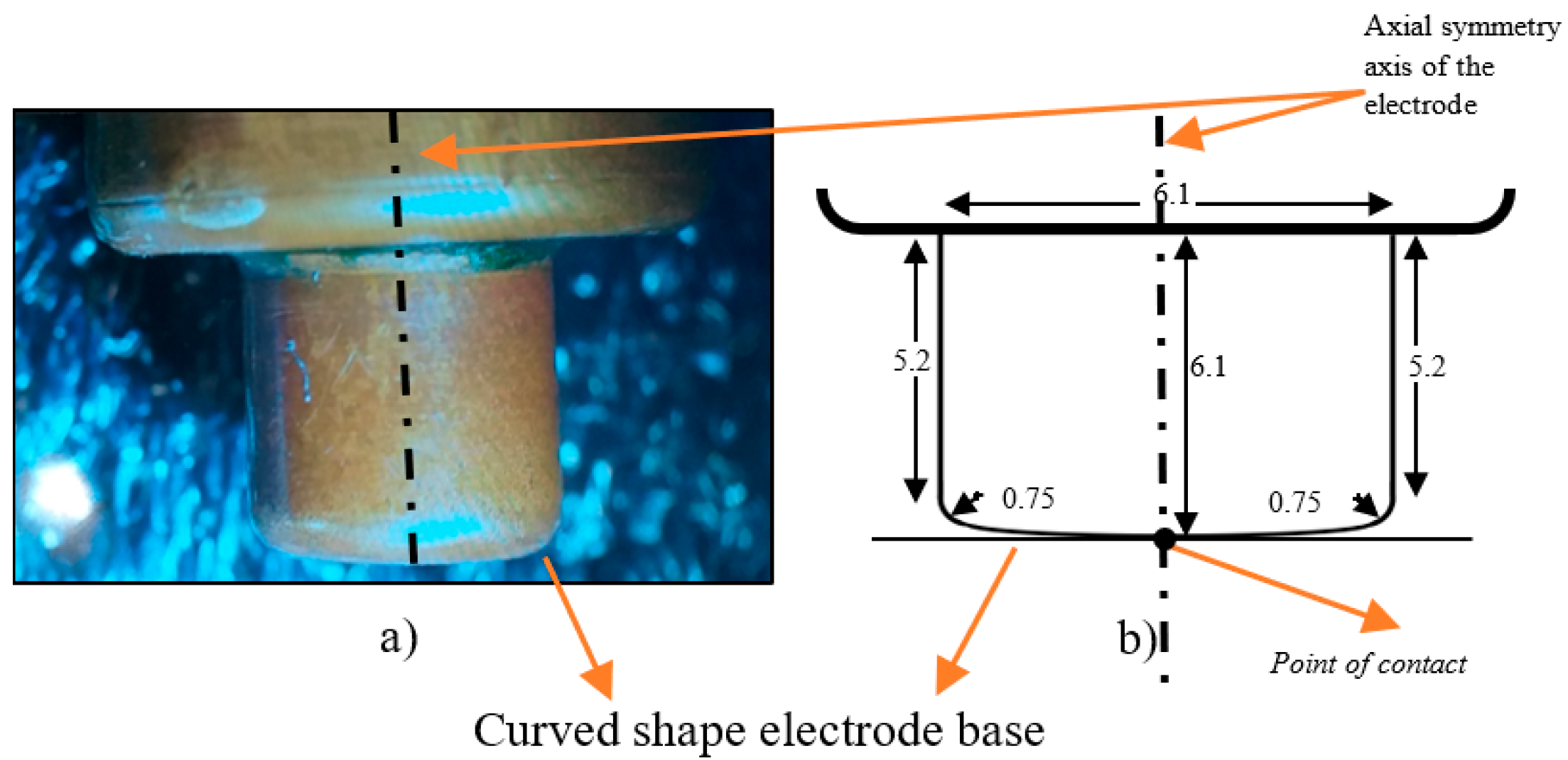

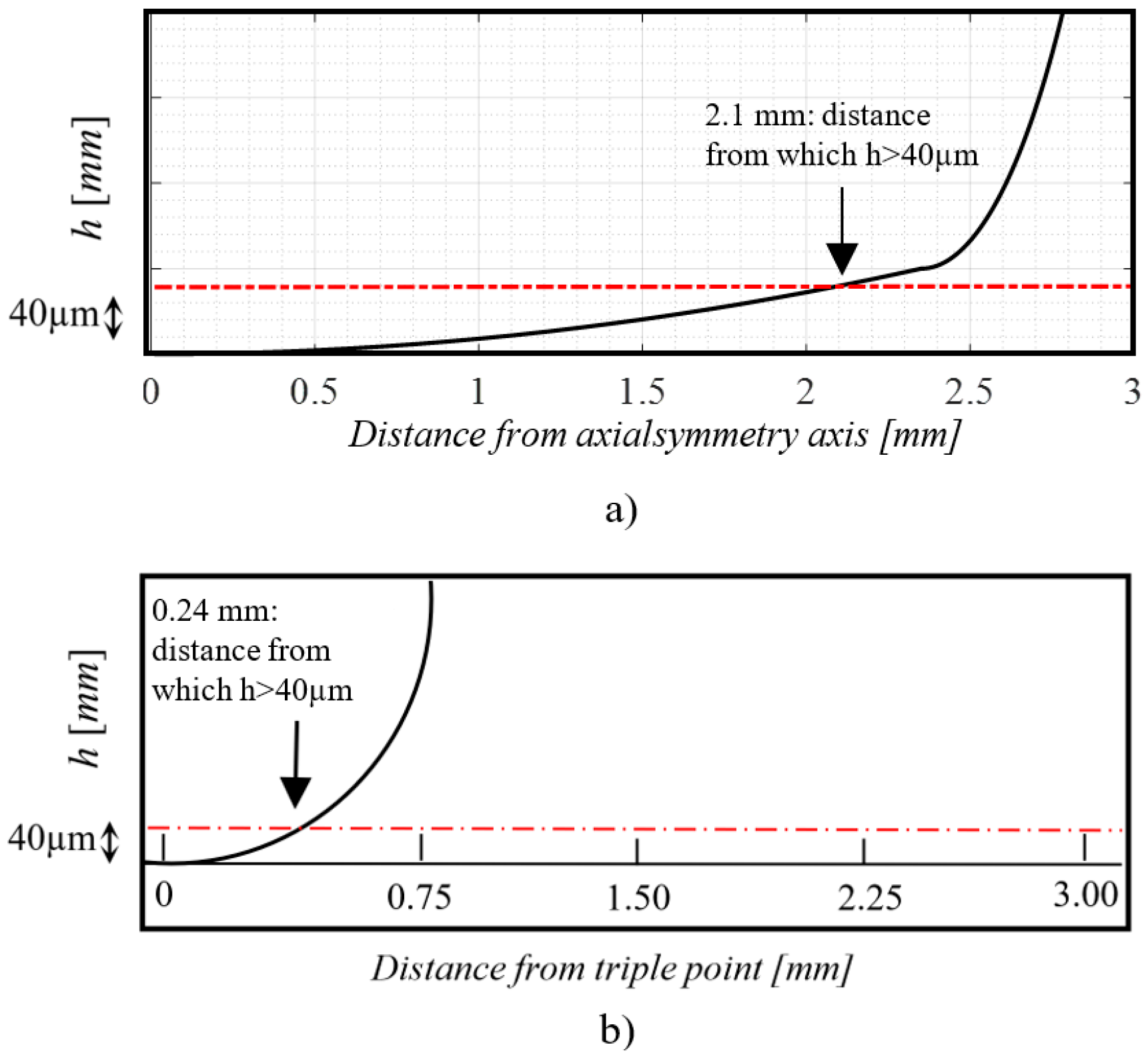
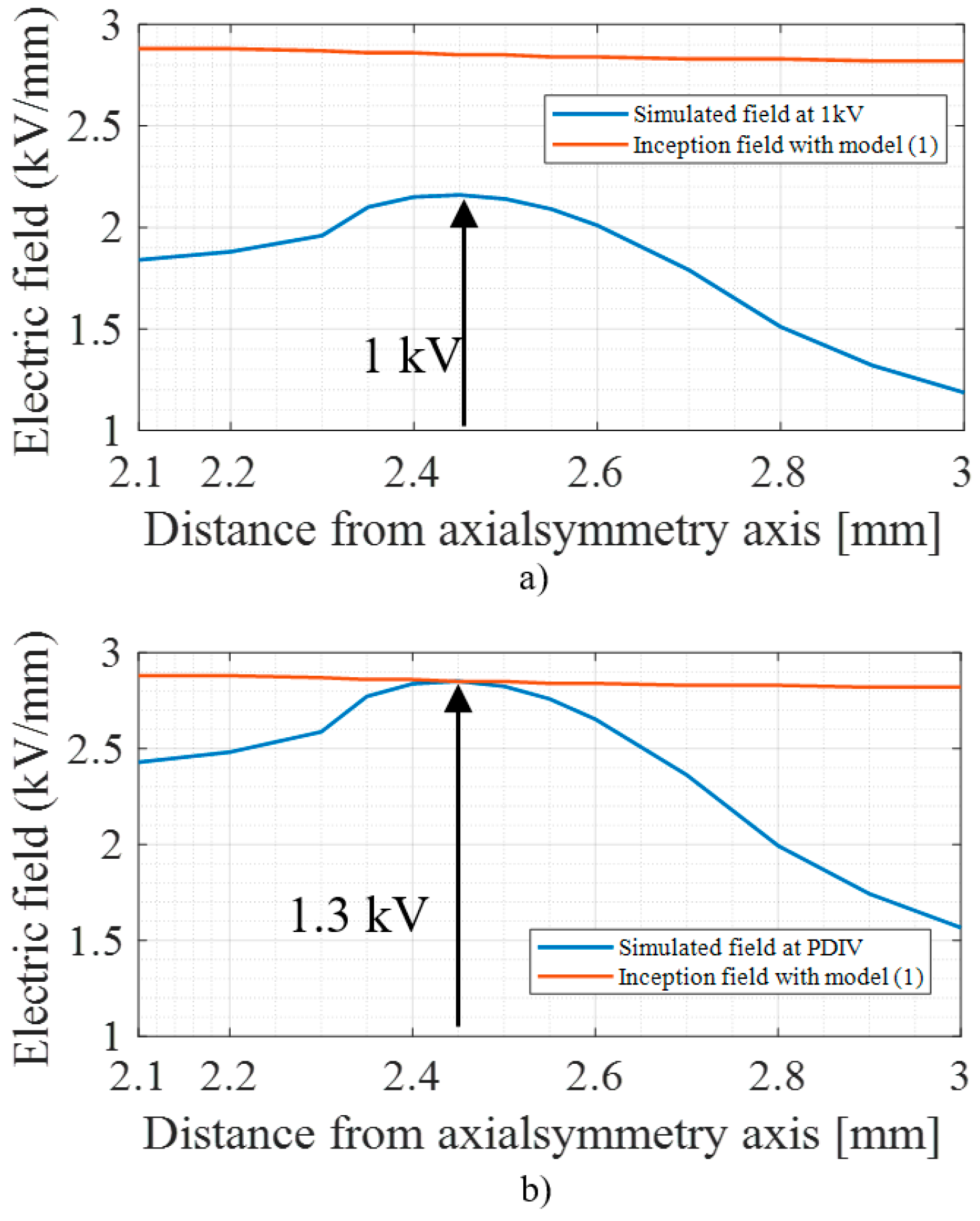
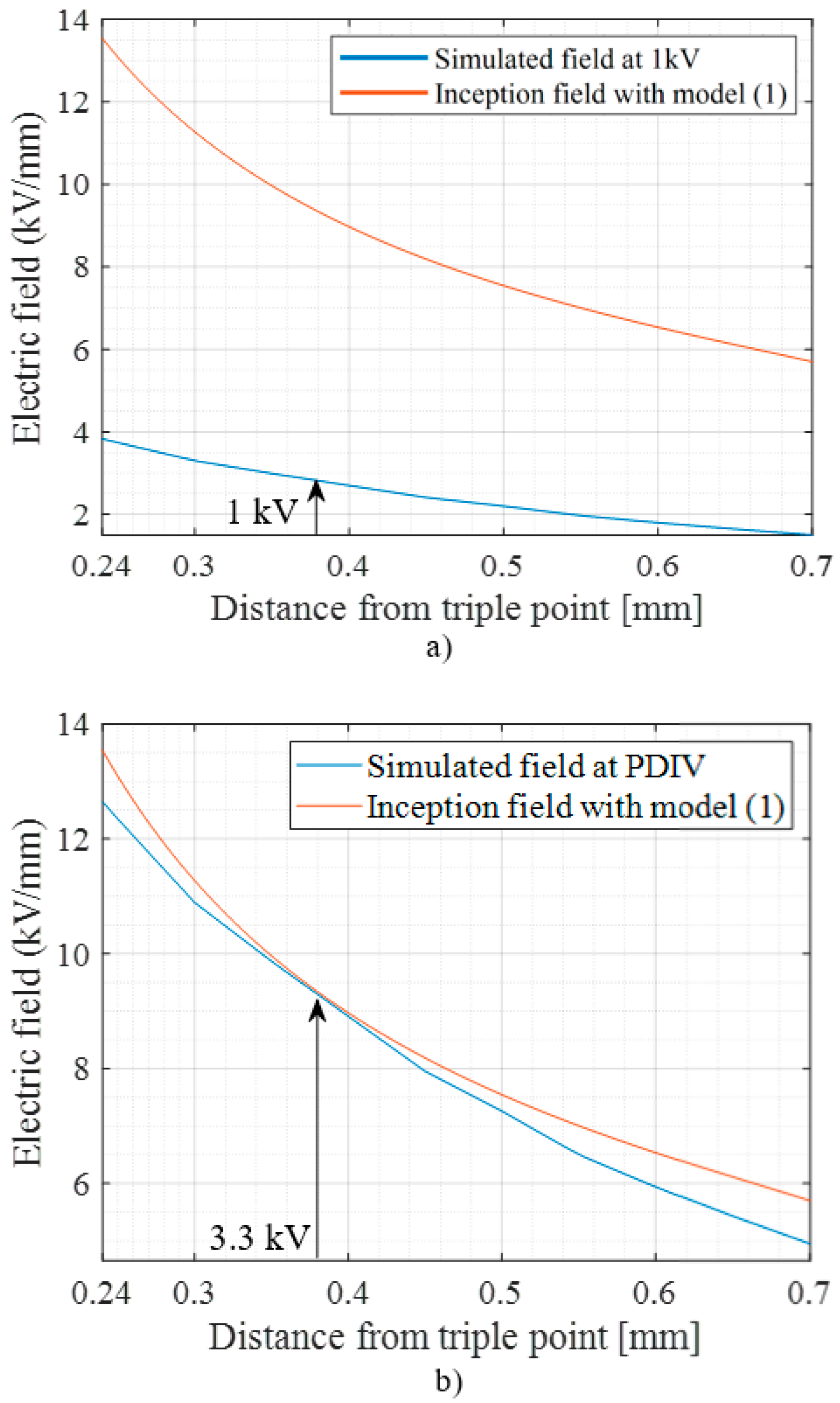



| Discharge Type | ks | |||
|---|---|---|---|---|
| Gas discharge | 25.2 | 8.6 | 2 | 1 |
| Surface discharge | 8.0 | 4.3 | 2 | ≤1 |
| Radius R (mm) | Surface Inception Field (kV/mm) | Surface PDIV (kV) | Gas Inception Field (kV/mm) | Gas PDIV (kV) |
|---|---|---|---|---|
| 0.600 | 1.64 | 1.54 | 9.1 | 3.3 |
| 0.625 | 1.64 | 1.56 | 10.1 | 3.4 |
| 0.650 | 1.64 | 1.58 | 9.5 | 3.3 |
| 0.675 | 1.62 | 1.60 | 9.4 | 3.3 |
| 0.700 | 1.61 | 1.61 | 9.9 | 3.3 |
| 0.725 | 1.60 | 1.63 | 9.8 | 3.1 |
| 0.750 | 1.60 | 1.66 | 9.1 | 3.3 |
| 0.775 | 1.60 | 1.67 | 9.5 | 3.4 |
| 0.800 | 1.59 | 1.71 | 9.2 | 3.3 |
| 0.825 | 1.58 | 1.70 | 10.2 | 3.3 |
| 0.850 | 1.57 | 1.72 | 10.5 | 3.3 |
| 0.875 | 1.57 | 1.74 | 9.6 | 3.3 |
| 0.900 | 1.57 | 1.75 | 9.4 | 3.3 |
| Surface Inception Field (kV/mm) | Gas Inception Field (kV/mm) | Surface PDIV (kV) | Gas PDIV (kV) | |
|---|---|---|---|---|
| Electrode A | 1.3 | 2.9 | 1.9 | 1.3 |
| Electrode B | 1.6 | 9.1 | 1.7 | 3.3 |
| Electrode A | Electrode B | |||
|---|---|---|---|---|
| N. of Acquisition | PDIV (kV) | ID | PDIV (kV) | ID |
| 1 | 1.3 | Internal 1 | 1.6 | Surface 1 |
| 2 | 1.1 | Internal 1 | 1.7 | Surface 1 |
| 3 | 1.2 | Internal 1 | 1.6 | Surface 0.8 |
| 4 | 1.1 | Internal 1 | 1.8 | Surface 0.9 |
| 5 | 1.3 | Internal 0.9 | 1.8 | Surface 1 |
| PDIVAC = (1.2 ± 0.3) kV Predominantly internal | PDIVAC = (1.7 ± 0.3) kV Predominantly surface | |||
Disclaimer/Publisher’s Note: The statements, opinions and data contained in all publications are solely those of the individual author(s) and contributor(s) and not of MDPI and/or the editor(s). MDPI and/or the editor(s) disclaim responsibility for any injury to people or property resulting from any ideas, methods, instructions or products referred to in the content. |
© 2023 by the authors. Licensee MDPI, Basel, Switzerland. This article is an open access article distributed under the terms and conditions of the Creative Commons Attribution (CC BY) license (https://creativecommons.org/licenses/by/4.0/).
Share and Cite
Gardan, G.; Montanari, G.C. Partial Discharge Inception Modelling of Insulating Materials and Systems: Contribution of Electrodes to Electric Field Profile Calculation. Appl. Sci. 2024, 14, 201. https://doi.org/10.3390/app14010201
Gardan G, Montanari GC. Partial Discharge Inception Modelling of Insulating Materials and Systems: Contribution of Electrodes to Electric Field Profile Calculation. Applied Sciences. 2024; 14(1):201. https://doi.org/10.3390/app14010201
Chicago/Turabian StyleGardan, Giovanni, and Gian Carlo Montanari. 2024. "Partial Discharge Inception Modelling of Insulating Materials and Systems: Contribution of Electrodes to Electric Field Profile Calculation" Applied Sciences 14, no. 1: 201. https://doi.org/10.3390/app14010201






